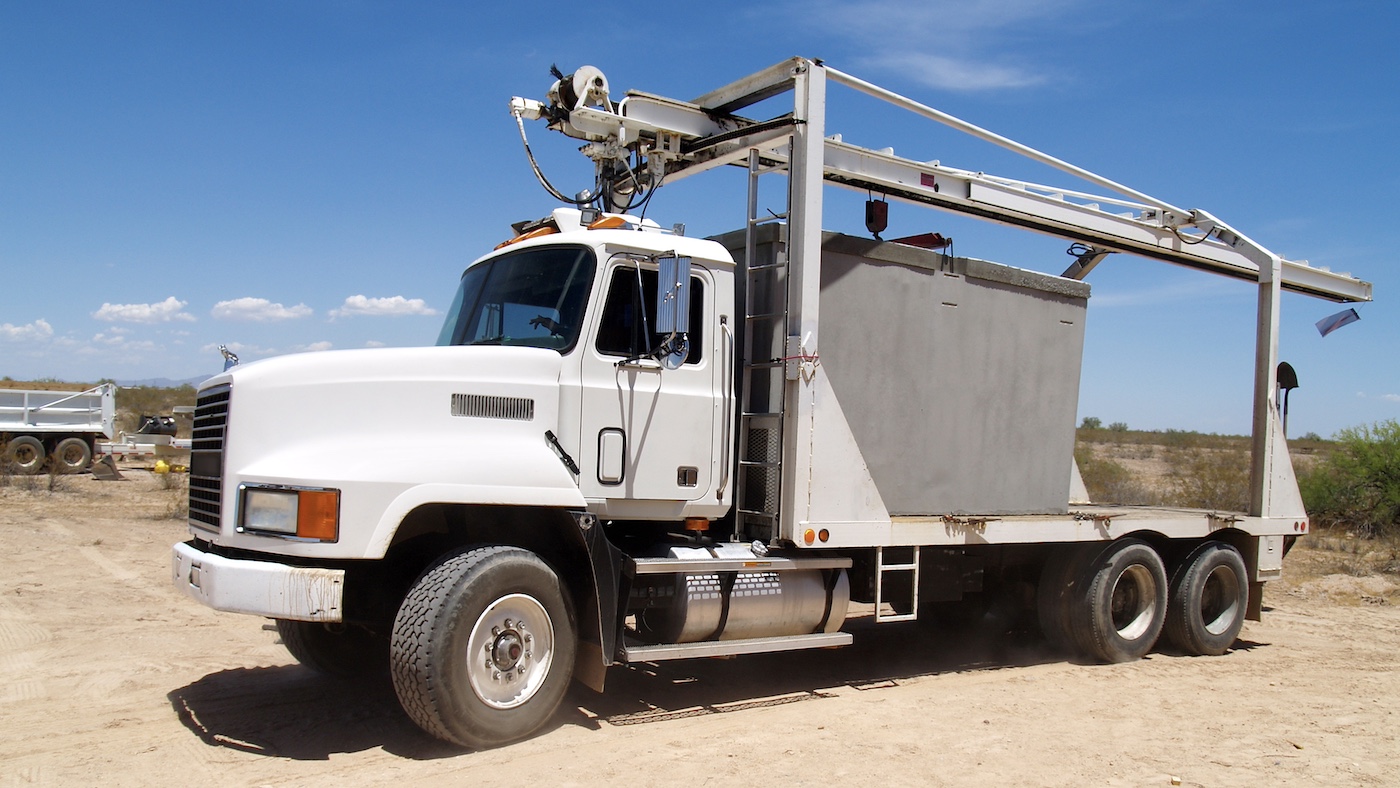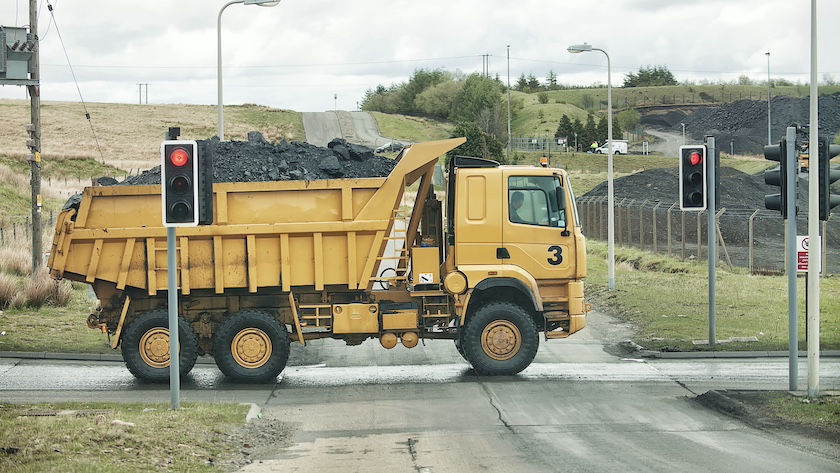How to Achieve Construction Fleet Safety in 2024

Implementing comprehensive fleet safety measures for construction vehicles is essential to mitigate risks, protect personnel, and maintain the integrity of construction projects, but creating an overall construction fleet safety plan can be hard to manage without the right information.
What is fleet safety in construction?
Safety for construction fleet vehicles refers to the set of practices and measures implemented to ensure the safety of personnel and vehicles used in construction-related activities. This includes trucks, vans, heavy iron machinery, and other vehicles associated with construction projects.
Whether these vehicles are traveling the nation’s highways and byways or operate solely on construction sites, maintaining construction fleet safety is essential to operating responsibly.
Elements of an overall fleet safety plan for the construction industry include:
- Vehicle maintenance: Regular inspection and maintenance of construction fleet vehicles to promptly address mechanical issues, ensuring that the vehicles are in optimal working condition. Driver Vehicle Inspection Reports (DVIR) are essential to regulatory compliance, safety, and cost-effective maintenance.
- Compliance with regulations: Adhering to local, state, and federal regulations related to vehicle safety and construction jobsite safety, including weight limits and other relevant standards.
- Safety equipment: Equipping vehicles with necessary safety features and equipment, such as reflective markings, lights, backup alarms, and other devices to enhance visibility and prevent accidents is extremely important in construction fleet operations.
- Load securement: Ensuring that materials and equipment are properly secured on construction vehicles to prevent shifting or falling during transit in an effort to reduce the risk of accidents.
- Route planning: Planning and optimizing routes to minimize travel time, reduce congestion, and avoid hazardous conditions, contributing to overall safety.
- Communication: Establishing clear communication channels between drivers, dispatchers, and construction site personnel to relay important information and address safety concerns in real-time.
- Technology integration: Utilizing advanced technologies, such as video safety and GPS tracking to monitor driver behavior and vehicle locations is another component in an overall construction fleet safety plan.
Construction driver safety: another key imperative
Construction driver safety is a critical aspect of overall construction fleet safety. Ensuring the well-being of drivers involved in construction projects is essential for preventing accidents, injuries, property damage, and keeping the safety of other drivers on the road top of mind.
Here are important aspects of construction driver safety:
- Driver training: Provide thorough training to drivers, covering safe driving practices, familiarity with construction site hazards, adherence to relevant safety regulations, and the rules of the road for these kinds of vehicles.
- Communication protocols: Establish clear communication channels between drivers, construction site personnel, and dispatchers. Ensure that drivers are aware of construction site conditions, changes, and potential hazards.
- Weather awareness: Train drivers to be aware of weather conditions and how they may impact driving safety. Examples include implementing protocols for adverse or seasonal weather conditions such as rain, snow, or fog.
- Emergency response training: Provide drivers with training on emergency response procedures, including evacuation plans, first aid, and communication best practices in case of accidents or incidents.
- Rest and break policies: Implement policies to ensure drivers get adequate rest and breaks to prevent fatigue, which can significantly impact driver alertness and reaction times.
- Vehicle visibility: Enhance vehicle visibility with the use of reflective markings, proper lighting, and warning signals. This is particularly important for vehicle safety in construction, especially when operating in low-light conditions.
By addressing these aspects, construction companies can create a safer environment for their drivers and reduce the risk of accidents when on the roads. Regular training, ongoing communication, and a commitment to a safe culture are essential components of a comprehensive construction driver safety program, but training your construction crew on defensive driving can also make a big difference.

Construction fleet defensive driving best practices
Defensive driving is crucial for construction fleet safety, especially with construction vehicles and other specialized fleets. Here are some best practices for fleet defensive driving:
- Maintain a space cushion: Keep a safe following distance from the vehicle in front, allowing for adequate reaction time and minimizing the risk of rear-end collisions. Promote awareness for drivers to be aware of distracted, impaired, and/or aggressive vehicles.
- Obey speed limits: Adhere to posted speed limits and adjust your speed based on road conditions, weather, and traffic flow.
- Be visible: Ensure your vehicle is highly visible with proper lighting, reflective markings, and the use of hazard lights when necessary.
- Regular vehicle inspections: Conduct regular post-trip and pre-trip inspections to ensure that the vehicle is in optimal working condition.
- Avoid distractions: Minimize distractions such as mobile phones, radios, or other electronic devices. Focus on the road and surroundings.
- Use mirrors effectively: Check mirrors regularly to be aware of your surroundings, including blind spots. Adjust mirrors properly before driving.
- Signal early and clearly: Use turn signals well in advance to communicate your intentions to other drivers. Make sure to use them when changing lanes or making turns.
- Stay informed about road conditions: Be aware of road conditions, construction zones, and weather forecasts. Plan routes to avoid potential hazards or delays.
- Adapting to traffic flow: Adjust your driving speed and behavior to match the flow of traffic, promoting smoother and safer interactions with other road users.
- Manage fatigue: Avoid driving while fatigued. Get adequate rest before long trips, take breaks, and adhere to rest periods as mandated per hours of service regulations.
- Plan for emergency situations: Have an emergency action plan in case of unexpected situations. Know how to react to potential hazards or accidents.
The role of technology in optimizing safety for construction fleet assets
Technology can play a crucial role in optimizing construction fleet safety by providing innovative solutions to monitor, manage, and enhance various aspects of vehicle operation and driver behavior.
With technology becoming the standard for fleets of all sizes, there are many advantages (including many cost savings) linked to integrating technological solutions into your daily operations. This includes mitigating construction fleet safety risks and what can be costly lawsuits. Some of these solutions include:
- Telematics systems: Implement telematics systems that collect and transmit real-time data on vehicle location, speed, fuel consumption, and driver behavior. Use telematics to monitor vehicle health, enabling proactive maintenance and reducing the risk of breakdowns.
- GPS tracking: Utilize GPS tracking to monitor the location of construction vehicles in real-time, facilitating efficient route planning and ensuring vehicles stay within designated areas. Use asset tracking to ensure that company assets, such as expensive yellow iron machinery, are not being moved or stolen.
- Collision avoidance systems: Install collision avoidance systems that use sensors and cameras to detect potential collisions and provide warnings to drivers, helping to prevent accidents.
- Dash cams: Install cameras on construction vehicles to record footage in case of incidents or accidents, providing valuable information for investigations and improving accountability.
- Driver safety solutions: Implement systems that monitor driver behavior, including speed, fatigue, and adherence to safety protocols, promoting safer driving habits.
- Electronic Logging Devices (ELDs): Use ELDs to accurately record driver hours, ensuring compliance with hours-of-service regulations and preventing driver fatigue-related incidents.
- Fleet management software: Implement fleet management software to centralize information on vehicle maintenance schedules, driver certifications, and compliance requirements.
- Automated alerts and notifications: Set up automated alerts for maintenance schedules, driver safety violations, and other critical events to enable timely intervention and corrective actions.
- Electronic documentation: Digitize and automate documentation processes, including inspection reports, driver logs, and compliance records, reducing paperwork and improving accuracy.
- Communication platforms: Implement communication platforms that enable real-time communication between drivers, dispatchers, and construction site personnel, improving coordination and response to safety concerns.
- Construction equipment safety data: Leverage predictive analytics, such as driver risk assessments, to identify patterns and trends related to safety.
Final thoughts
In the competitive construction industry, fleet and construction jobsite safety is imperative for success. With aggressive deadlines, budgeting constraints, and the unknowns that are inevitable on any given day, it’s almost impossible for fleet managers to maintain construction fleet safety without the help of technology.
When you throw in the burdens that construction fleet litigation can have on an organization and the need for prevention and protection against lawsuits that arise from negligent practices, it’s easy to see how the implementation of a fleet safety plan is paramount to growing business and remaining competitive.
Learn more
To learn more about Lytx® and our suite of comprehensive fleet management software and tools that can be a critical part of your organization’s construction fleet safety policy, contact us or book a demo today.
